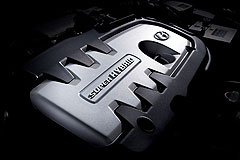Future models - Hyundai - Elantra - LPG-electricLPG hybrid bidGas build: LPG hybrid Elantra will be introduced in Korea next year and could come here soon after. Hyundai Elantra-based LPG hybrid could be here in 201011 Jun 2008 By JAMES STANFORD and TERRY MARTIN HYUNDAI Australia has revealed that it is considering importing a hybrid car that runs on LPG. Based on the current Elantra, the LPG hybrid is due to be introduced in South Korea next year. A company spokesperson has confirmed to GoAuto that the vehicle – which was presented by Hyundai Motor Co engineers at the diesel Sonata launch last week – was under investigation for release in Australia and could be here around 2010. “It hasn’t actually gone into production, but from what was said there was a view to 2010 at introducing it from there on in,” she said. “In what capacity is yet to be ascertained. It was something that was presented as part of a research and development presentation – and it would be something that would be very exciting for a lot of Australian consumers – but we just have to wait and see how that progresses.” If it meets development targets, the LPG-electric Elantra will use less than five litres of LPG per 100km.  Left: Hyundai Accent hybrid engine. Left: Hyundai Accent hybrid engine.Given the current price of LPG is around one-third the price of petrol and diesel, the vehicle could prove significantly cheaper to run than other alternative-engine models such as diesels and even petrol-electric hybrids like the Toyota Prius. Hyundai and sister company Kia are currently developing both the LPG-electric hybrid and, as previously reported, a petrol-electric hybrid also due for release at the end of this decade. It currently has more than 3000 petrol-electric Kia Rio hybrids serving in government fleets in order to help develop the technology before it is introduced to the wider public next year. The Hyundai-Kia hybrid system is different to the system used in the Prius in that it does not run on electric power alone at low speeds. The vehicle in development uses a 67kW/126Nm 1.4-litre four-cylinder petrol engine mated to a 12kW/95Nm electric motor and driving the front wheels via a continuously variable transmission. The electric motor is located between the flywheel and the gearbox and assists the petrol engine when starting and during acceleration. When the vehicle is cruising, the electric motor turns off. The Rio hybrid uses a 144-volt battery, which is stored in the boot and is recharged with energy generated when the engine slows down. Read more:Hyundai gets serious with diesel powerElantra pricingMotor industry news |
Click to shareHyundai modelsResearch Hyundai Elantra pricingMotor industry news |














Facebook Twitter Instagram